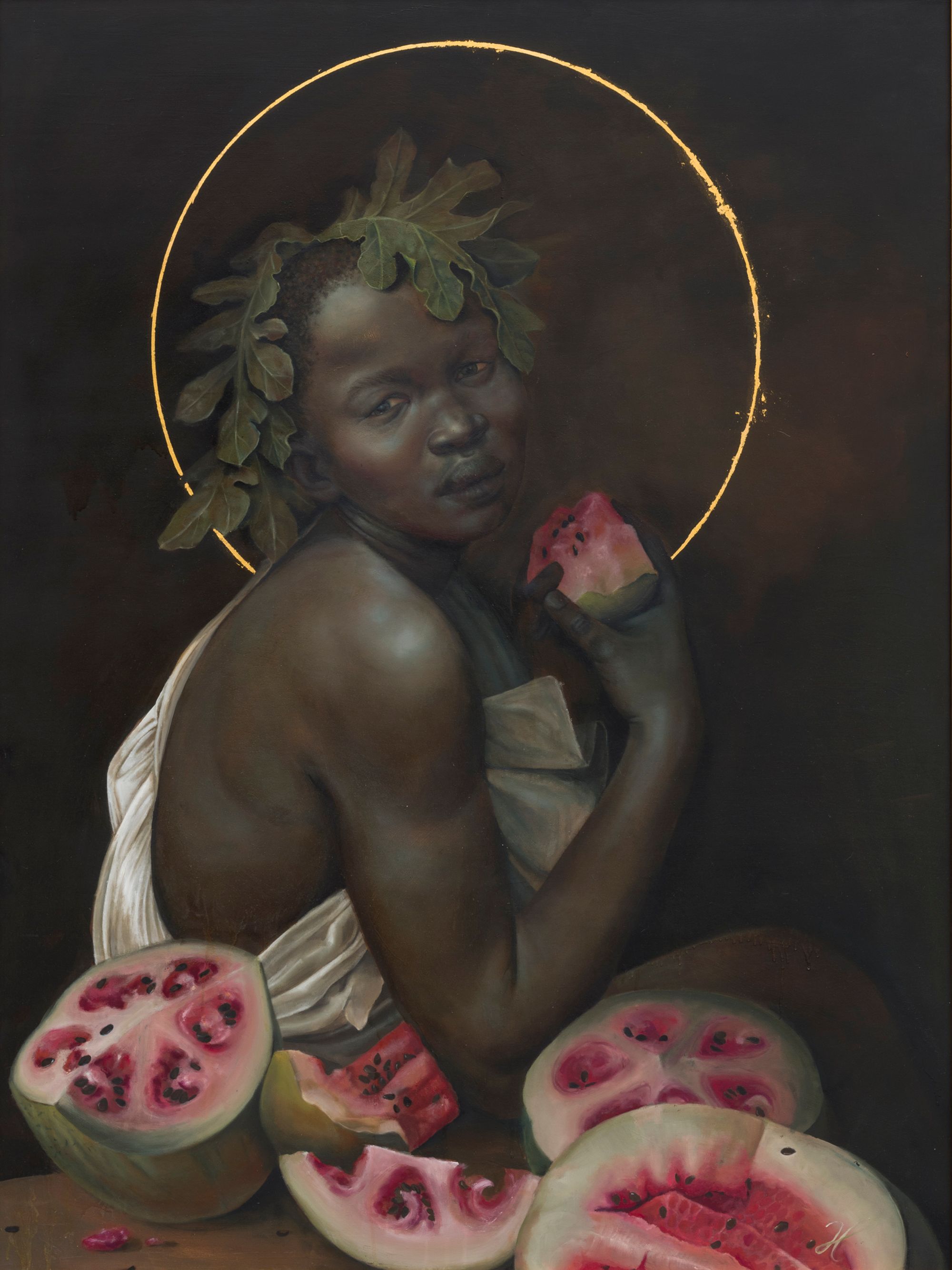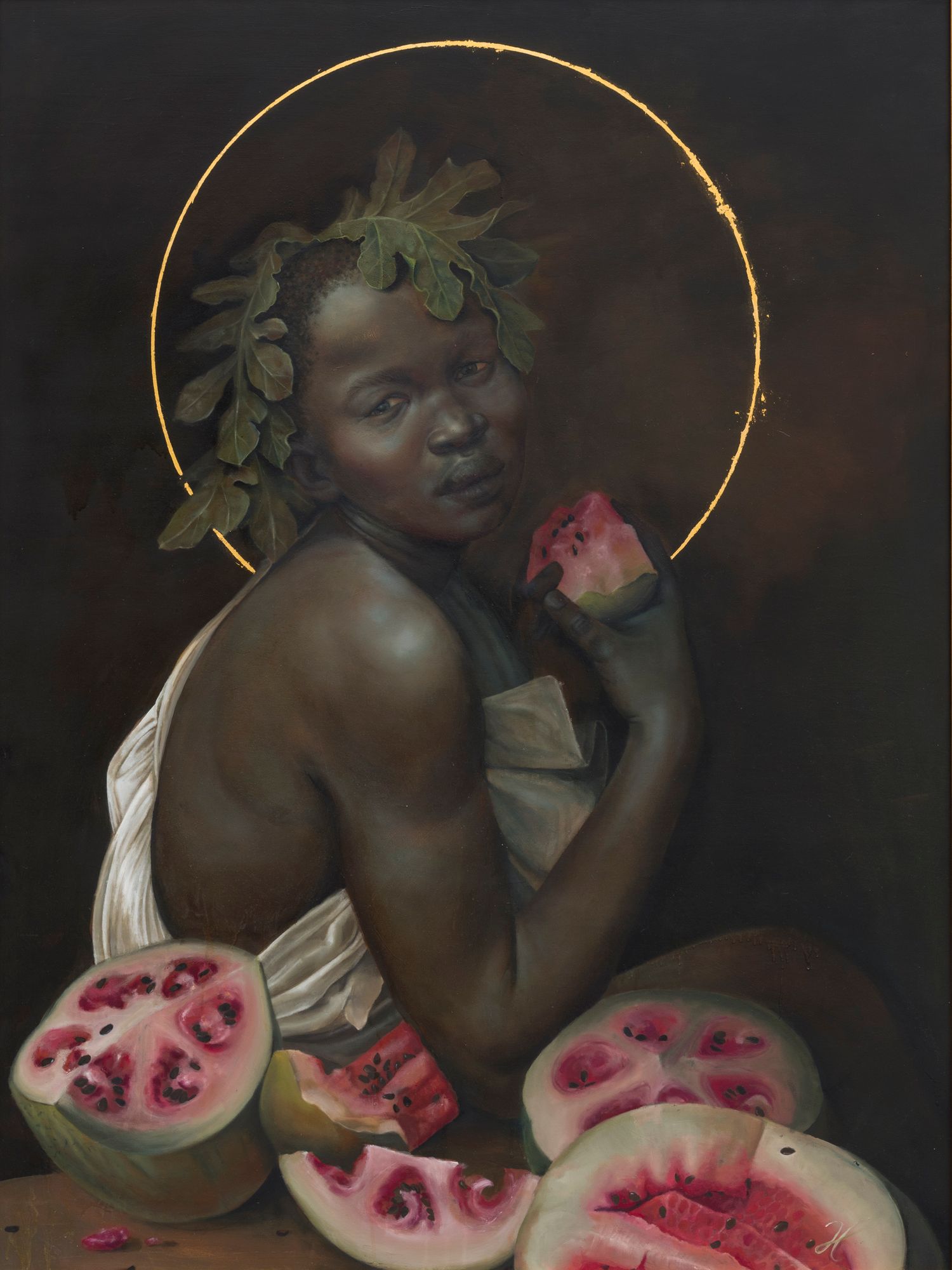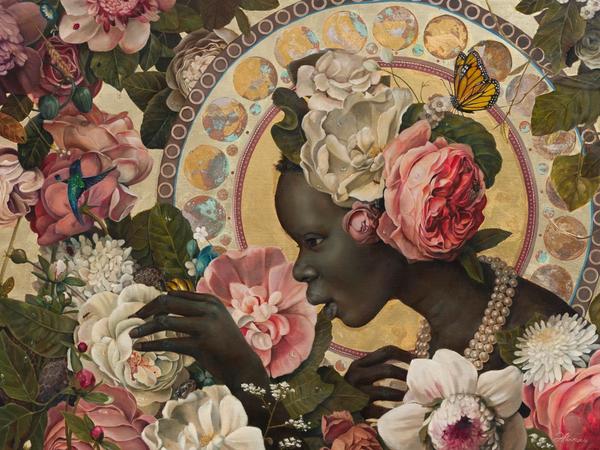Forbidden Fruit
Oil on Wood Panel, 48" x 36"
The painting of Eve eating watermelon uncovers the roots of the racist stereotype. Watermelon was a source of independence and freedom for Black people after the Civil War. Free Black men and women grew, sold, and enjoyed watermelons. Threatened by the freedom experienced by the newly emancipated, factions of the South characterized the fruit as a symbol of perceived uncleanliness, laziness, and childishness. The slightly broken golden ori encircling Eve’s head indicates the trauma still exists today, that more work is necessary for healing and removal of the stigma. As part of the African American history of independence, the watermelon—and the reclaiming of it—is empowering.
Inspired by Caravaggio’s Young Sick Bacchus (1593/1594), Rosales directs her audiences to consider the beauty and strength of her protagonist, while reflecting on some of the root causes of racism in America.
Exhibitions
Garden of EveΩA Omega Alpha






